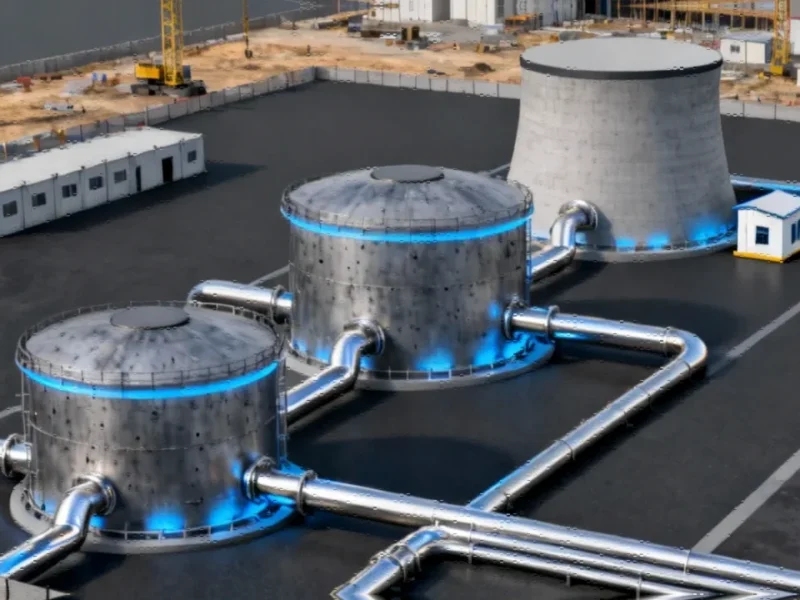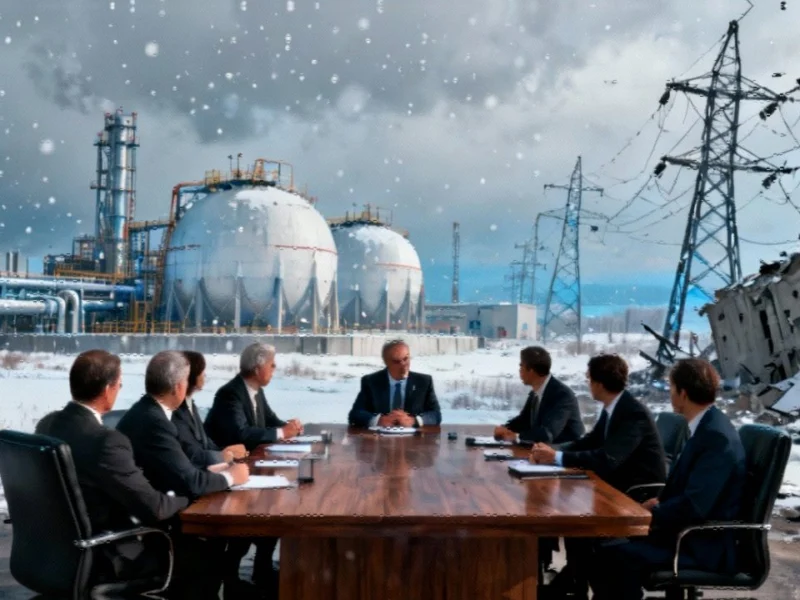Note: Featured image is for illustrative purposes only and does not represent any specific product, service, or entity mentioned in this article.
The Nuclear Gambit for Cloud Computing
Amazon’s bold $500 million investment in X-Energy represents one of the most significant corporate bets on small modular reactor (SMR) technology to date. The partnership aims to deploy up to 960 megawatts of nuclear capacity through X-Energy’s Xe-100 reactor designs at the Cascade Nuclear Energy Center near Richland, Washington. This ambitious project, structured in three 320-megawatt phases, underscores the escalating power demands of modern computing infrastructure and the cloud giant’s determination to secure clean, reliable energy sources.
For perspective, the planned nuclear capacity could power multiple facilities comparable to xAI’s 200,000-GPU Colossus supercomputer, which consumes approximately 300 megawatts under full load. As industry developments in artificial intelligence and high-performance computing accelerate, the energy requirements for supporting such infrastructure are becoming increasingly substantial.
Technical Promise Meets Regulatory Reality
Amazon champions X-Energy’s SMR technology for its purported advantages over conventional nuclear reactors: smaller physical footprint, faster deployment timelines, and lower operating costs. However, these claims remain largely theoretical, as the technology has yet to be proven at commercial scale. The specter of previous SMR projects derailed by unexpected operational expenses looms large over the industry.
More immediately, X-Energy faces the significant hurdle of securing Nuclear Regulatory Commission approval before construction can commence. This regulatory process typically spans several years and requires extensive safety demonstrations. While Amazon has already released conceptual renderings of the proposed facility, the actual path to operational reactors remains lengthy and uncertain.
Meanwhile, related innovations in energy management and infrastructure planning are becoming increasingly crucial for large-scale computing operations seeking to balance reliability with sustainability goals.
The Competitive Nuclear Landscape
Amazon isn’t alone in pursuing atomic solutions to data center power challenges. Oracle has announced plans for at least three SMRs to support a gigawatt-scale nuclear reactor, while Google-backed Kairos Power is developing a 50MW molten salt reactor near Oak Ridge National Laboratory. Notably, Kairos has already secured NRC approval for its Hermes 2 demonstrator, potentially positioning it ahead in the race to deploy functional SMR technology.
These competing approaches reflect broader market trends toward diversified energy strategies among technology giants. As computational demands escalate, traditional power sourcing methods are proving insufficient for the scale required by modern data centers.
Bridging Solutions and Strategic Partnerships
While awaiting SMR development, cloud providers are pursuing intermediate nuclear strategies. Amazon’s $650 million acquisition of Cumulus Data’s atomic data centers adjacent to the 2.5 gigawatt Susquehanna nuclear plant provides immediate capacity that could scale to 960 megawatts. Similarly, Microsoft is financing the restart of Three Mile Island Unit-1, scheduled to resume operations in 2027.
These transitional measures demonstrate the pragmatic approach major technology firms are taking toward energy security. The partnership between Amazon, X-Energy, and South Korean nuclear specialists Doosan Enerbility and Korea Hydro and Nuclear Power further illustrates the global nature of recent technology collaborations in the energy sector.
Implementation Timeline and Challenges
The “up to” qualification in Amazon’s 960-megawatt projection highlights the uncertainty inherent in nuclear projects. Construction isn’t expected to begin until late this decade, with operations commencing in the 2030s. This extended timeline presents both planning challenges and opportunity costs for a company facing rapidly growing energy demands.
The market trends toward long-term energy planning are becoming increasingly evident across multiple industries, though few face the same scale of power requirements as cloud computing providers.
According to industry analysis, Amazon’s broader ambition involves deploying 5 gigawatts of X-Energy SMRs by 2039, representing one of the most aggressive corporate nuclear energy strategies ever proposed. Whether this vision becomes reality will depend on navigating technological validation, regulatory approval, and economic viability across multiple project phases.
The Broader Implications
Amazon’s nuclear strategy reflects a fundamental shift in how energy-intensive industries approach power sourcing. As renewable sources like solar and wind face intermittency challenges, and traditional fossil fuels conflict with sustainability commitments, advanced nuclear technology offers a potential path forward. However, the success of this approach hinges on overcoming significant technical and regulatory obstacles that have historically plagued nuclear innovation.
The coming decade will prove decisive not only for Amazon’s energy strategy but for the entire SMR industry. As computational demands continue their exponential growth, the relationship between advanced computing and next-generation energy infrastructure will only deepen, making projects like the Cascade Nuclear Energy Center critical test cases for the future of powered technology.
This article aggregates information from publicly available sources. All trademarks and copyrights belong to their respective owners.



